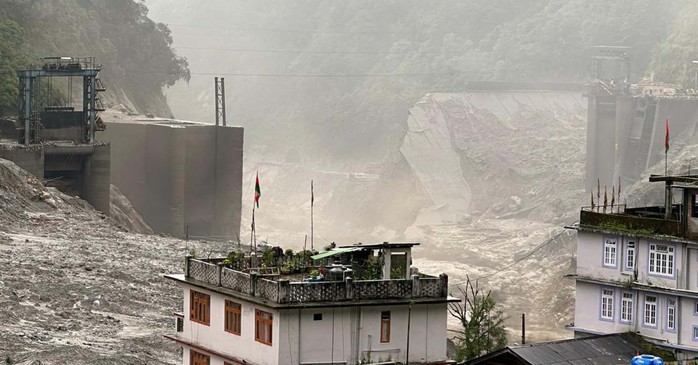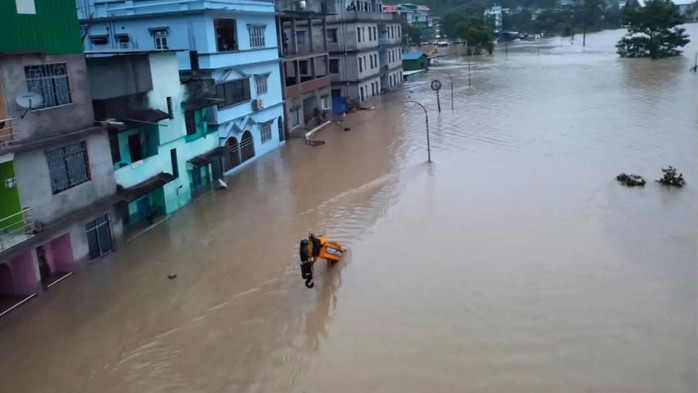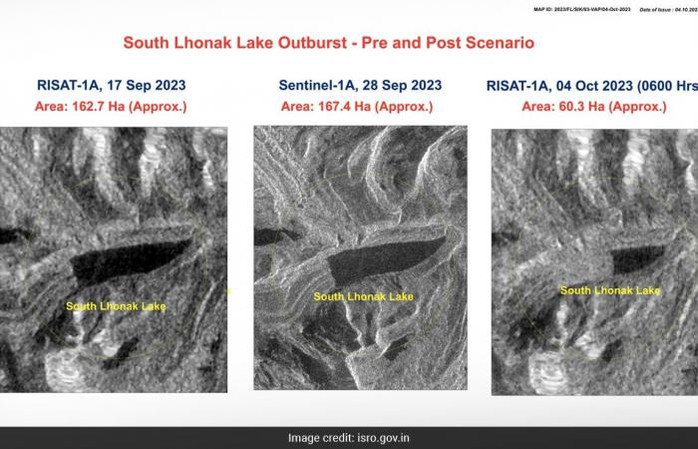(NLDO) – At least 14 people were killed and 102 others were missing after heavy rains caused a Himalayan glacial lake in northeastern India to burst its banks, officials said on October 5.
According to Reuters, the Lhonak glacial lake in the Himalayas, in the state of Sikkim, burst its banks on October 4, causing massive flooding that affected the lives of 22,000 people.
This is the latest deadly weather phenomenon in this mountainous region of South Asia, the cause of which is believed to be due to climate change.

“The search operation is being carried out amid incessant rains, with the Teesta River flowing rapidly and roads and bridges washed away in many places,” an Indian defence ministry spokesman said.
As of early on Thursday, the state disaster management agency said 26 people were injured and 102 were missing, including 22 soldiers. Eleven bridges have been washed away.
Video from ANI news agency showed rising floodwaters entering built-up areas, causing houses to collapse, military bases and other facilities to be damaged, and vehicles to be submerged.

India’s weather department has warned of landslides and flight disruptions as more rain is expected in many parts of Sikkim and neighbouring states over the next two days.
Sikkim is currently cut off from the West Bengal city of Siliguri after a major highway collapsed.
G T Dhungel, a member of the Sikkim Legislative Assembly, told Reuters that petrol and diesel were running short in the state capital Gangtok but food supplies were plentiful.

Flash floods from the glacial lake have hit the Teesta valley, about 150 km north of Gangtok city, near the border with China.
A 2020 report by India’s national disaster management authority said glacial lakes pose an increasing risk to infrastructure and lives downstream, as Himalayan glaciers melt due to climate change.
A paper by scientists at India’s National Remote Sensing Centre a decade ago warned that the risk of a glacial lake bursting was “very high” – at 42%.
The disaster on October 4 was worse than a 1968 lake burst in Sikkim because it involved the release of water from the Teesta V dam of state-run hydropower company NHPC, officials said.
A government source told Reuters that four dam gates were washed away and it was unclear why they were not opened in time. NHPC said it would assess the damage once water levels returned to normal.





